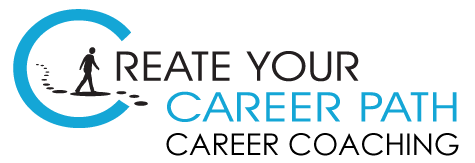About 12 years ago, I visited San Francisco with my boyfriend. One day we decided to ride bikes across the Golden Gate bridge. That bridge is huge, the water underneath it is cold and choppy. The whole image of the bridge inspires awe and can be intimidating too. Plus, it was very windy and chilly that day. The wind was blowing against us. I remember standing there before we started and thinking – this is big, the bridge is long, the wind’s blowing against us, and I don’t know what’s on the other side. This is a little intimidating! Do I really want to do this? And where are we going to end up anyway- what’s on the other side and is it really worth it? I’m from Florida so I don’t like chilly and windy. Halfway across the bridge we paused for a break, and these thoughts are repeating over and over in my mind – is this really worth it? Can’t I just turn back and have the wind at my back instead? In that moment halfway across the bridge, suspended over turbulent waters, I knew I was faced with a decision. Do I push forward, or do I turn around and retreat? There’s no harm in going back right?
I often think about that moment in my life – even today. I especially recall it when working with career transition clients who are facing their futures with so much uncertainty. Right now, there’s a whole lot of uncertainty with the economy the way it is. As we all know – unemployment rate is at least 8%? Good news is that you can create possibility and opportunity for yourself despite being laid off in three steps– build a new bridge over this obstacle in your life just as you have with other obstacles you have faced.
Step One- Realize Your Job is Not Your Identity. It’s important to shift your perspective and change what it means to be in career transition because without a changed perspective you won’t move forward at all. The words you use to describe a career transition make a difference! You can say things like, “A space has opened up,” “There is an opportunity here,” “A door has opened.” These are all different and positive ways to look at it. Attitude is everything. The definition of attitude is: a complex mental state involving beliefs, feelings, and dispositions to act in certain ways. Attitude starts in your mind and affects what action steps you take towards your goal. If you have a defeated attitude to begin with, that’s what happens in your world. Focus on gratitude- change your mental filter. Instead of thinking, “I’m a victim,” say instead – “I have a chance here to recreate my reality.” Choose to become grateful for what you have instead of focusing on what you don’t have.
Step Two- Uncover Your Not-So-Hidden Talents. Define success your way, not based on what others say or what society tells you necessarily. Re-create your reality. Are you using your talents? The talents you want to be using? Are you passionate about your job? These questions allow you to access what your heart knows. Think about what talents you would love to use in a career. What would make you want to jump out of bed in the morning to go to work? If money were no object and you were guaranteed for success, what would you be doing for a job? Nearly ½ of US workers expect to be working at traditional retirement age of 67- that’s a long time! Make sure you are doing something that you enjoy.
Step Three- State What You Want. This step has to do with trusting in the face of the unknown. Being laid off/being in flux is scary and hard for people. Especially with this tough economy, we don’t believe there’s something out there for us. The news tells us there aren’t jobs out there, but what if there are tons of opportunities out there? You have to allow them, find them, and seek them out. Tune into what’s possible. It’s also important to move past scarcity thinking. This happens too with the tough economy- we think there aren’t enough jobs for everyone. It’s the mentality of someone else wins and I lose. Shift your perspective instead to – there’s enough for everyone. Belief is essential; without belief nothing is possible. We know that athletes who visualize their success see themselves winning. The belief goes to a subconscious level for them and they are more likely to succeed because of it. We can do this too. Define your goal with your career transition. Know what direction you’re going in. Now that your job is gone, this is your chance to redefine yourself. State what you want and believe in it.
What should you do after analyzing these three steps?
Visualize. Close your eyes for me for a moment and think about this… What would your life look like if you re-created your reality? If you could step into it tomorrow? You wake up, ready for the day completely energized, believing in yourself, confident, and a spring in your step. You step outside and there’s a new reality here waiting to greet you. What 3 things would be different for you? Go from your heart, no thinking or intuition. Relish this for a moment, feel how this new reality feels. Share with someone if you can. Now, take a breath and shift gears. What would it be like to not reach what you just saw? What would be lost if you never gave this new reality a chance to happen? If those 3 things never occurred, how would that feel? What opportunity would be missed?
Take Action. So I was halfway across the golden gate bridge, and I thought about what was going to be lost if I didn’t cross the bridge. I had the opportunity to turn back, but in the end I knew I didn’t want to live with that decision. One of the things that kept me moving forward, not just on the bridge, but also through my own career transition was, “Do I really want to define myself by failure and by having done it?” Crossing that bridge, and my career change were defining moments. Take action to define your own career change.


